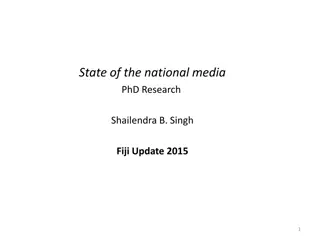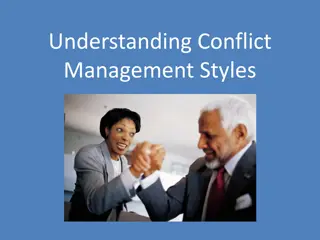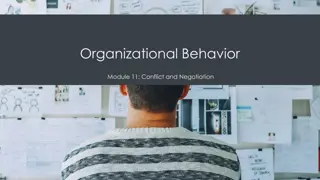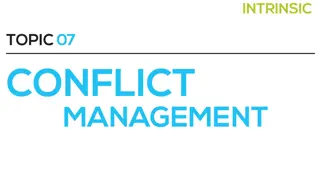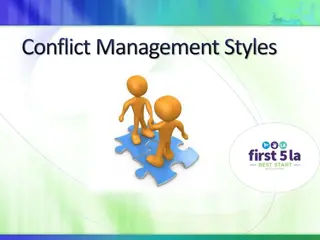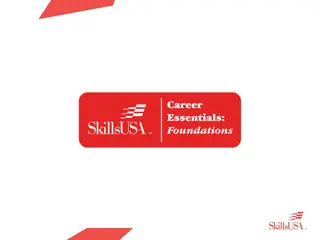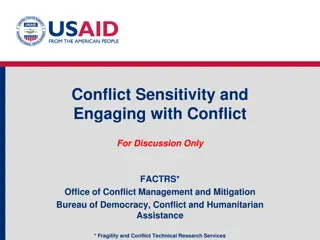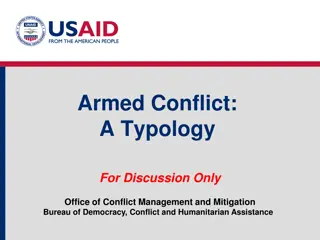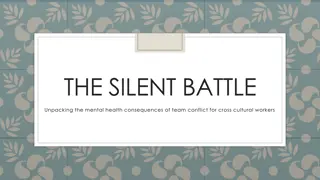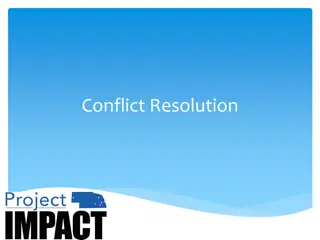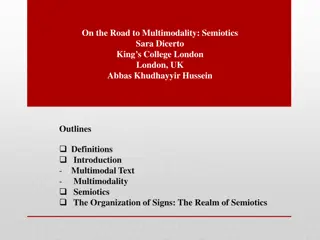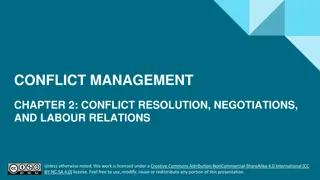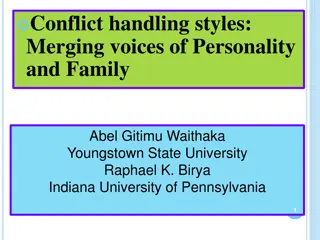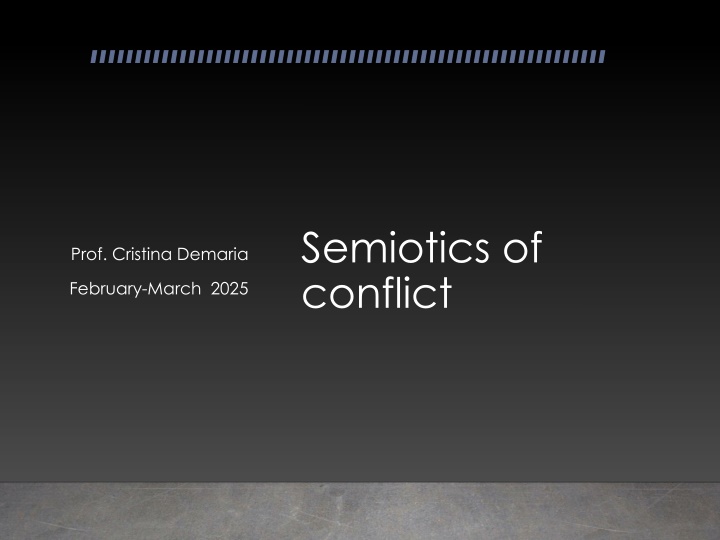
Semiotics of Conflict: Post-Media Age Study
This course delves into the semiotics of conflict, exploring contemporary conflicts and post-war situations through the lens of digital media, cultural memory, and collective affects. With a focus on war as a political violence phenomenon, it examines post-conflict cultures, the role of semiotics, and the legacy of past conflicts. Recommended readings include works on post-conflict memories, data in radical wars, and cultural semiotics in political contexts.
Download Presentation

Please find below an Image/Link to download the presentation.
The content on the website is provided AS IS for your information and personal use only. It may not be sold, licensed, or shared on other websites without obtaining consent from the author. If you encounter any issues during the download, it is possible that the publisher has removed the file from their server.
You are allowed to download the files provided on this website for personal or commercial use, subject to the condition that they are used lawfully. All files are the property of their respective owners.
The content on the website is provided AS IS for your information and personal use only. It may not be sold, licensed, or shared on other websites without obtaining consent from the author.
E N D
Presentation Transcript
Semiotics of conflict Prof. Cristina Demaria February-March 2025
The course Detailed schedule and recommended readings of a course on to attempt a recap: News, social media, photographs/images, cinema and artistic imaginary of conflict and post-conflict gendered cultures and societies: contemporary conflicts and radical wars under (semiotic) scrutiny
Which war, conflict and post- conflict situations will we look at? Current visible war(s), and past conflicts/post-conflict situations (collect material and create groups); which war do you want to look at? Current wars: the Russia/Ukraine conflict, that did not start on February 2022; Israeli Palestinian on-going conflict; Iran, etc. Past ones: WW2; South American post-dictatorship cultures/situations (Argentina and Chile); What about Italian conflicts and wars? We will look at the legacy of Fascism, and at the lead years , but this is not a course based on Italy s predicaments and conflicts. Why?
First week: February 11-13 What is a conflict? What is a war? We won t be speaking about inter-personal conflicts How do we define wars and conflicts? We will speak about war as a species of the genus of conflict, as a form of political violence The post-media age and the role of the digital media in dealing with conflicts and their aftermath: a new logistics of perception How does semiotics fit into the study of conflictand post- conflict/post-war scenarios? The relationship between conflict, memory and cultures, and Yuri Lotman s cultural semiotics; the role of collective affects/passions What do we mean by post-conflict cultures ?
First week: references and recommended readings Demaria, C. (2020), What is a Post-conflict Culture? Temporalities and Agencies of Post-Conflict Memories , in C. Demaria (ed.), Post-conflict Cultures. A Reader, London: CCCP Press, pp. 11-47. Ford, M., Hoskins, A. (2022), Radical War. Data, Attention and Control in the Twenty-First Century, Hurst & Company, London. Kaldor, M. (2012), New and Old Wars (3rd edition), Cambridge, Polity Press. Makarychev, A.,Yatsyk, A. (2017), Lotman's Cultural Semiotics and the Political. Reframing the Boundaries: Thinking the Political, London, Rowman & Littlefield Publishers. Monticelli, D., Maran, M. and Sedda, F. (2024), Semiotics of Conflict. A Lotmanian Perspective, Tallin, TLU Press (Introduction, chapter 2 and part II: this part will be used also in the following weeks)
Readings: Montanari, F. (2004), I linguaggi della guerra, Roma, Meltemi. Montanari, F. (2020), The New Narrative Form of Post-conflicts: New Wars as World- Wide War , in C. Demaria (ed.), Post-conflict Cultures. A Reader, London: CCCP Press, pp. 49-66. [extra] A film for this week, if you manage to watch it: Civil War (Alex Garland, 2024).
Second week: February 18- 20 Group discussions and presentations From this week we will start individual and/or group discussions of journal articles and book chapters, linking them to case studies; you can bring and present The student(s) (max 3 people, depending on the length of the article/chapter and the case-study) must select from the week reading list an essay to present and discuss with the class. Select images as well, and films Collected material will also be discussed. You can use examples and other material depending on the conflict you want to analyse, and on the topic of the week: films, photographs, images; newspaper articles; social media posts and stories, etc.
Actors, roles, and gendered identities at stake Women, men and wars: engendering conflict. Witnesses and bystanders Violent women: the case of Italian women terrorists during the anni di piombo ; the case of Chilean female torturers; women and genocide The figure of the victim , the perpetrator , and of the implicated subject (and of the hero, the soldier; and nowadays of digital individuals and social media groups)
Readings: Bielby, C., Murer, J.S. (eds) (2018), Perpetrating Selves. Doing Violence, Performing Identity, Palgrave Macmillan (selected chapters) Bielby, C. (2019) Gendering the Perpetrator , in S. Knittel; Z. Goldberg (eds.), The Routledge International Handbook of Perpetrators Studies, London & New York, Routledge. Glynn, R. 2013, Women, Terrorism, and Trauma in Italian Culture, London and New York, Palgrave (selected chapters)
Readings Rothberg, M. (2019), The implicated subject. Beyond Victims and Perpetrators, Stanford University Press, Stanford CA. Sjoberg, L. & Gentry, Caron E. (2007), Mothers, Monsters, Whores. Women s Violence in Global Politics, London, Zed Books (selected chapters) Sjoberg, L. & Gentry, Caron E. (2008), Reduced to Bad Sex: Narratives of Violent Women from the Bible to the War on Terror , International Relations, Vol 22(1): 5 23 [DOI: 10.1177/0047117807087240] Gaufman, E. (2023), Damsels in distress: Fragile masculinity in digital war , Media, War & Conflict, Vol. 16(4) 516 533 Kalnes,O., Nina M. Bj rge, N.M. (2025), So, we have occupied TikTok : Ukrainian women in #ParticipativeWar , Media, War & Conflict, on line.
Ljungbck, H., (2024), Vertical interference: video, drone witnessing, and the myth of precision targeting , Media, War & Conflict, Vol. 17(3), 275 291 MacKenzie M., (2023), Iconic war images and the myth of the good American Soldier , Media, War & Conflict, Vol. 16(2) 192 208. Pavliuc, A., (2025), Gender and narrative in digital political communication during Russia s full-scale invasion of Ukraine , Media, War & Conflict (on line) Trisko Darden, J., Steflja, I., Wintersieck, A., (2025), Framing victims and perpetrators: Local and international reporting on the International Criminal Courtcase against Dominic Ongwen , Media, War & Conflict, Vol. 1, 1 19.
T Third week: February 25- February 27 Media witnessing and the role of the image Media witnessing and wars; on conflict and post- conflict situations as (still?) iconic events. What is media witnessing? And how has it changed? On still images and photographs of atrocity; on visual reportage of war, images as icons, and memes The view from above (war and drones; drone as witnesses)
Readings Blagard, B., Mortensen, M., Neumayer, C. (2017), Digital images and globalized conflict , Media, Culture & Society, vol. 39 (8), pp. 1111, 1121. Boudana, S.; Cohen, A.C.; Frosh, P. (2017), Reviving icons to death: when historic photographs become digital memes , Media, Culture & Society, vol. 39 (8), pp. 1210-1230. Frosh, P.; Pinchevsky, A. (2014), Media Witnessing and the ripeness of time , Cultural Studies, vol. 28 (4), pp. 594-610.
Readings Pollock, G. (2012), Photographing Atrocity: Becoming Iconic? , in G. Batchen, M. Gidley, Miller, K. and J. Prosser (eds), Picturing Atrocity. Photography in Crisis, London, Reaktion Books. (this essay is also linked to women and war ) Maurer, K. (2017), Visual Power: The scopic regime of military drone operations , Media,War & Conflict, vol. 10, no. 2, pp. 141-15, http://journals.sagepub.com/doi/pdf/10.1177/17506352166361 37. Auchter, J. The Ocular Politics of Targeting: Disembodiment and the Perpetrator Gaze in the War on Terror , Media, War & Conflict,, Vol. 16(4) 534 547 Instead of film, for this week research images!
Forth week: March 4-6 The role of moving images Cinema, memory and post-conflict: the documentary genre. Cinema and spaces of post-conflict and memories Filming spaces of war and memories Cinema as a counter-monument/architecture
Readings Demaria, C. and Violi, P. (2019), The act of documenting: Joshua Oppenheimer s The Act of Killing, Media , War & Conflict; https://doi.org/10.1177/1750635219871910 Moral, J., Bayer, G. and Canet, F. (2020), Facing the perpetrator s legacy: post-perpetrator generation documentary films , in Continuum. Journal of Media and Cultural Studies 34(2), pp. 255-270. Nichols, B. (2016), Speaking Truth with Film: Evidence, Ethics, Politics in Documentary, Oakland, University of California Press (Part III, chapters 9 and 10; part IV, chapter 16).
Readings Demaria, C., Panico, M. (2023), Remembering the other, repositioning oneself: The right to a biography and autocommunication in perpetrator and collaborator descendant documentaries , Social Semiotics, vol. 32 (5). Demaria, C. (2023) Turning spaces of memory into Memoryscapes. Cinema as counter monument in Jonathan Perel s El Predio and Tabula Rasa , in C.Demaria and P. Violi.
Fifth week: March 11-13 Fictionalizing history? Cinema, memory and post-conflict: How do we fictionalize history? From WW2 to the Rpresent Posttraumatic Cinema Groups presentations Film: The Zone of Interest (Jonathan Glazer 2024)
Readings Elm, M., Kabalek, K., Kohne, J.(2014), The Horrors of Trauma in Cinema: Violence, Void, Visualization, Newcastle, Cambridge Scholars. (selected chapters) Elsaesser, T. (2014), German Cinema. Terror and Trauma, New York, Routledge. (Part One) Hirsh, J. (2004), After Image. Film, Trauma, and the Holocaust, Philadelphia, Temple University Press. (selected chapters) Kaes, A. (1989), From Hitler to Heimat: The Return of History as Film, Cambridge, MA., Harvard University Press. (selected chapters) Kobrynskyy, O.; Bayer, G. (eds.) (2015), Holocaust Cinema in the Twenty-First Century, London, Wallflower Press. (selected chapters)
The exam (for the ones that regularly attended the course and gave a presentation) A paper of approximately 4000 words to be handed by the deadline that will be published on Almaesami (first date: end of March) It will have to be on a specific case-study (a media/art representation of a war, a conflict, a post-conflict situation) that will have to be analyzed using the categories and methods that will be presented in the next weeks We will discuss how to write the paper in further details as we will present case-studies

